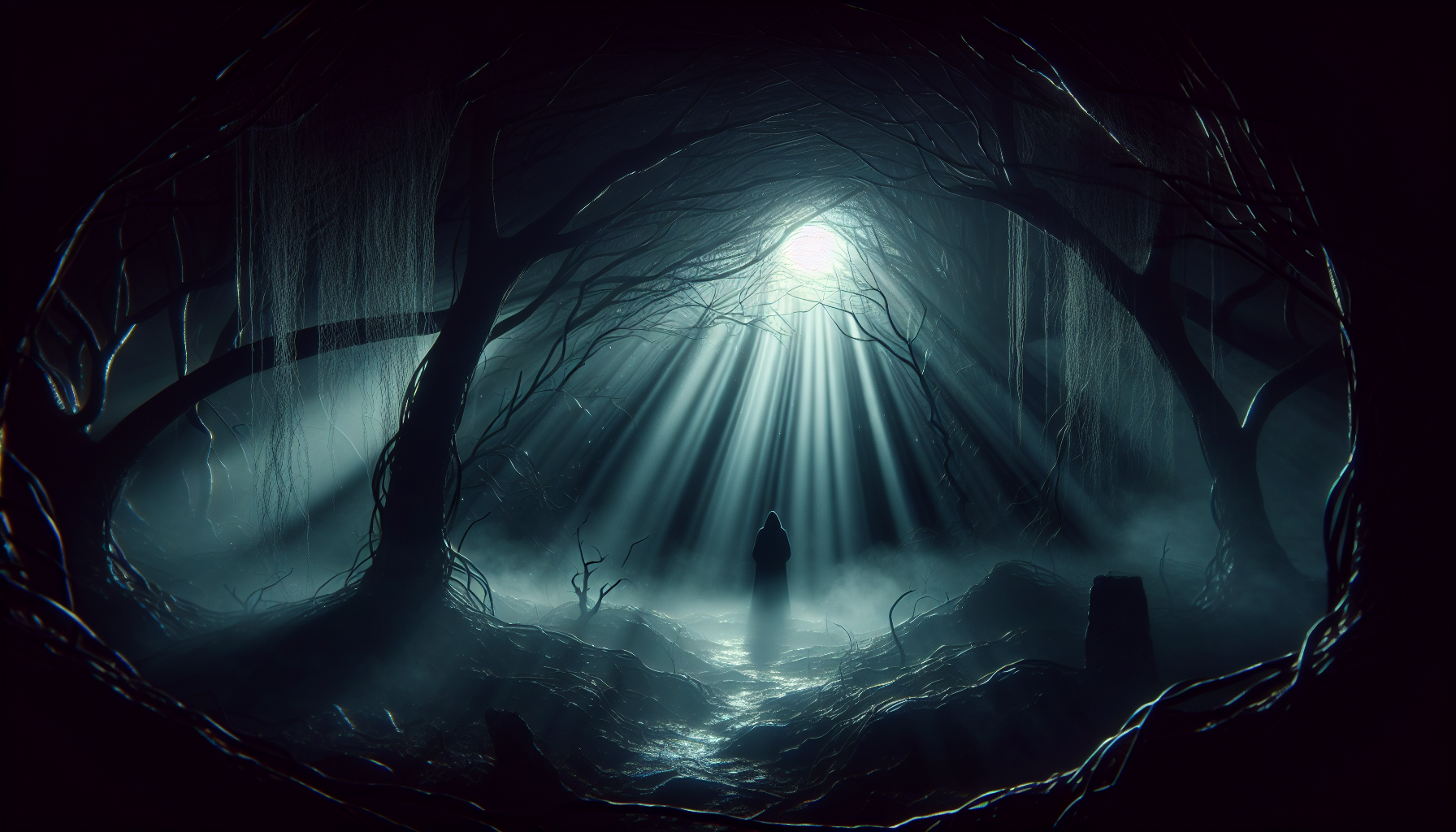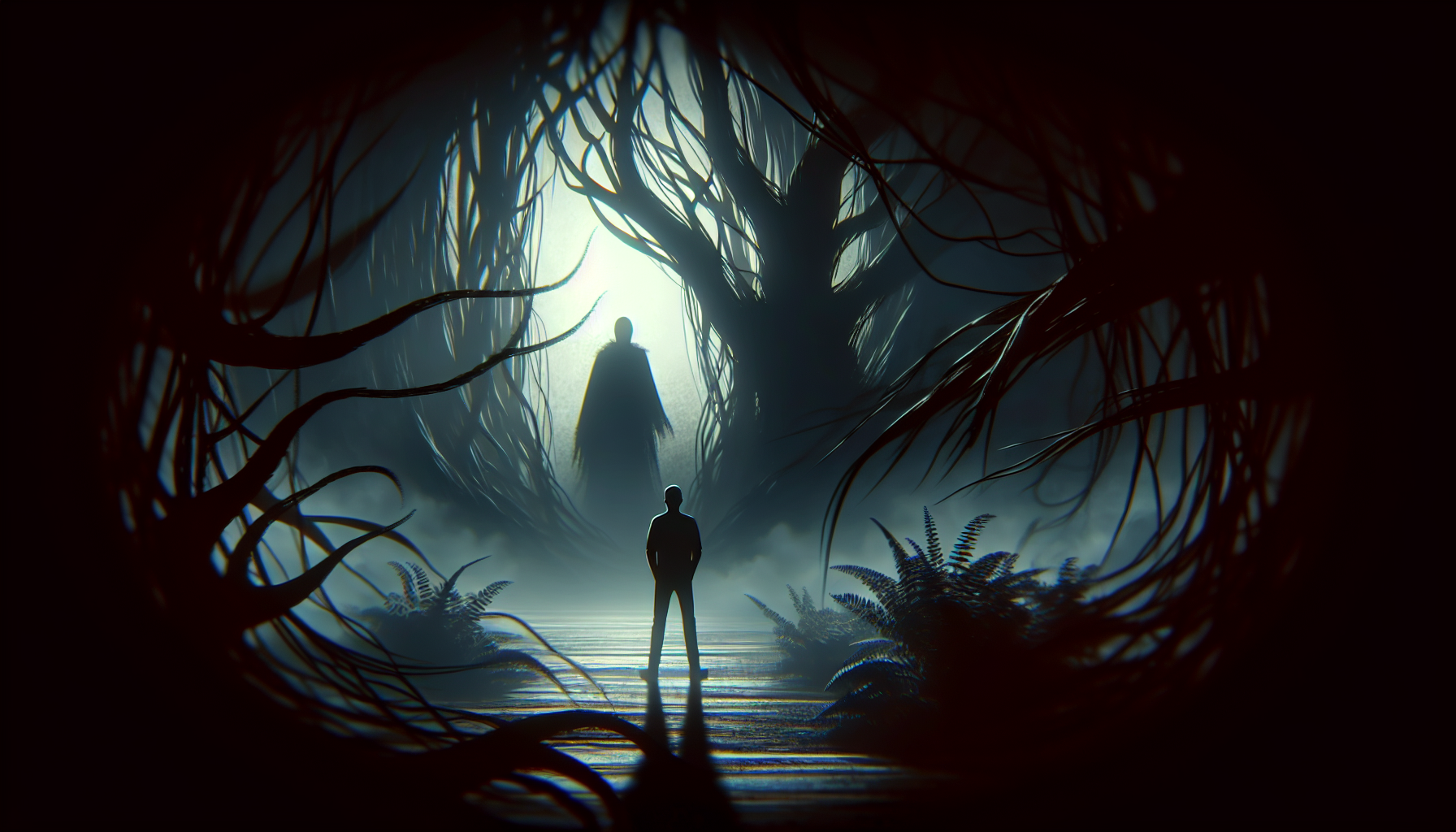You know that feeling when a creepy story just gives you chills? Yeah, horror stories have a unique way of tapping into our primal fears. They can make us question what’s lurking in the dark or remind us of nightmares we wish we could forget.
But don’t worry! If you stick around, I’m going to break down the key elements of a captivating horror plot. With the right structure, you’ll be ready to craft a spine-tingling tale that grabs hold of your readers’ imaginations.
From the eerie setting to the unexpected twists, we’ll explore how to build tension and create memorable characters. So, grab a snack, dim the lights, and let’s dive into the world of horror writing!
Key Takeaways
- The central theme of horror often involves fear, survival, and the unknown, resonating with readers’ primal fears.
- Carefully choose the setting for your story, using locations like haunted houses or creepy forests to enhance the mood.
- Create relatable protagonists who connect emotionally with readers, facing both internal and external conflicts.
- An effective antagonist should be complex, creating a sense of danger and urgency throughout the plot.
- Build tension through rising action and suspenseful events that lead to a climactic confrontation.
- Foreshadowing can deepen the narrative, keeping readers engaged as they anticipate future events.

Main Idea
The central theme of a horror story often revolves around fear, survival, and the unknown. It’s essential to find a plot premise that resonates with your audience while tapping into universal fears. This could be anything from the fear of death, loss of control, or the dread of isolation. Your plot needs to establish an underlying message that can invite the reader to reflect on their own fears and anxieties, setting a storytelling framework that encourages deeper engagement.
Setting
Location:
The location is crucial in defining the mood of your horror narrative. Think about classic settings like a haunted house, an eerie isolated village, or a creepy forest. Such geographical contexts can heighten the sense of dread and make the story more immersive. Urban legends set in familiar yet unsettling environments can evoke a different kind of fear, one that taps into the reader’s familiarity with their own surroundings.
Time:
The temporal context of your story also has a significant impact on the atmosphere. A contemporary story may resonate more with today’s audience, while a historical setting can add layers of complexity. Nighttime settings during storms or significant holidays can enhance the ominous tone, creating the perfect backdrop for horror. Choosing the right era influences characters’ behaviors and the societal norms that might be integral to your plot.
Atmosphere:
The overall atmosphere should envelop your readers in a sense of unease. Aim for a mix of an ominous mood and suspenseful feel by incorporating chilling environments and dark tones. You can achieve this through vivid descriptions that appeal to the senses—think about how sounds, sights, and even smells can grip the reader. Creating a foreboding ambiance instantly raises the stakes, making the reader more susceptible to the horror elements that follow.
Characters
Protagonist:
Your main character should be relatable, particularly if you want the audience to invest in their fate. This could be a flawed individual, a survivor, or even a naïve victim who faces extraordinary challenges. Developing an engaging character arc adds emotional depth and allows readers to connect with the protagonist’s fears, struggles, and ultimately their journey through horror.
Antagonist:
The antagonist, whether it’s a villain, monster, or psychological threat, serves as the source of horror in your story. The more complex your antagonist, the richer your plot will be. Aim to provide layers to this character or force, allowing them to challenge the protagonist in multifaceted ways. Whether they are a supernatural being or a malevolent force, their presence should evoke a sense of dread and urgency.
Supporting Characters:
These characters enhance the narrative and add depth to your protagonist’s journey. They could be sidekicks, family members, or even skeptical friends who might question the protagonist’s fears. Supporting characters can serve various functions, like acting as potential victims or providing comic relief. Their dynamics with the main character can elevate the tension and give readers more reason to care about the outcome.

Conflict
Main Conflict:
The main conflict is the backbone of your horror story, creating tension that drives the plot forward.
This struggle often places your protagonist in a life-or-death situation, pitting them directly against the antagonist.
It should resonate with the reader on some level, pulling them into the emotional weight of the character’s dilemma.
For example, in a survival scenario, the protagonist may face dangers like a relentless monster, forcing them to make desperate choices.
Internal Conflict:
Internal conflict adds psychological depth to your story by showcasing your protagonist’s fears and doubts.
Readers connect with characters who face moral dilemmas or self-doubt, making the horror more relatable and impactful.
For instance, a character may question their worthiness to survive, leading to inner turmoil that amplifies the external threats they face.
This conflict can lead to critical moments where the protagonist must choose between their own survival and protecting others.
External Conflict:
The external conflict involves the threats posed by the antagonist, and it drives the narrative tension.
This could be a supernatural entity, a serial killer, or even societal pressures that reinforce the horror experience.
Creating scenarios where your protagonist faces relentless challenges fosters an environment of dread, enhancing the storytelling.
As they navigate these dangers, the stakes rise, keeping the reader engaged and invested in the outcome.
Build-up (Rising Action)
The build-up is crucial for crafting suspense and tension before reaching the climax.
This stage should include a series of escalating events that heighten the protagonist’s sense of danger.
Incorporating foreshadowing – subtle hints about what’s to come – helps to weave a rich tapestry of tension.
Readers love when they can piece clues together, feeling a sense of anticipation as the plot unfolds.
Consider pacing your story wisely; an effective balance between dialogue, description, and action keeps the reader on the edge of their seat.
For example, a series of strange occurrences could lead up to the protagonist discovering a horrifying truth about their surroundings.
Climax
The climax is the moment of peak tension in your horror story, where all conflicts meet in an explosive confrontation.
This pivotal scene is often where your protagonist faces their greatest fear or the ultimate showdown with the antagonist.
Crafting this moment with care ensures that it resonates emotionally – you want readers to invest in the outcome.
Think about how you can use pacing and descriptive language here to create a visceral experience.
Whether it’s a chase scene through a dark forest or a battle in a haunted house, the climax should leave readers breathless.
This is the moment where they question whether the protagonist will prevail or succumb to the horrors lurking in the shadows.

Resolution
The resolution is where your horror story finds its conclusion, ideally stemming from the climax’s aftermath.
This moment reveals how the conflicts that have plagued your characters unwound, often altering their fates.
Readers appreciate closure or at least a meaningful resolution that ties up loose ends, understanding the characters’ journeys.
For example, if your protagonist survives, consider how they cope with their trauma or how their relationships have changed post-conflict.
Alternatively, a darker ending might leave readers with lingering questions or unresolved tension.
Well-crafted resolutions allow the emotional and thematic elements to resonate, ensuring your story lingers in readers’ minds long after the last page.
Themes
Themes are what give your horror story layers, diving deeper into the human experience and evoking reflection.
Common themes in horror include the fear of the unknown, survival instincts, and the consequences of isolation.
To explore these themes effectively, let them guide your characters’ motivations and decisions throughout the narrative.
For instance, the survival theme can be represented not just through physical challenges but also moral dilemmas faced by characters.
By incorporating relatable fears and psychological complexity, you can turn an ordinary horror story into a thought-provoking exploration of deeper themes.
Consider how each character’s journey reflects or contrasts with the themes to enhance emotional engagement and provoke thought.
Ending
The ending is your story’s final note, leaving readers either fulfilled or questioning everything they just read.
Decide whether you want to provide a definite closure, wrapping up all arcs neatly, or go for an open-ended conclusion that keeps readers thinking.
An ambiguous ending can amplify the horror if it leaves lingering doubts about the villain’s fate or the safety of the surviving characters.
Alternatively, a clear resolution allows readers to feel a sense of satisfaction, even if it’s tainted with a reminder of the horror they just experienced.
Whichever route you choose, make sure the ending resonates with the established themes and character arcs—this will enhance the story’s emotional impact significantly.
Unique Twist
A unique twist can elevate your horror story from predictable to unforgettable, keeping readers guessing until the very end.
This unexpected turn should be relevant to the plot, adding new dimensions to established characters or the narrative’s direction.
For example, revealing that the antagonist is closely linked to the protagonist—perhaps as a family member or an old friend—can create a chilling effect.
Make sure to set up your twist with subtle hints that only become apparent upon reflection, rewarding readers for their attention.
A well-placed twist can deepen the horror element, forcing readers to reconsider everything that has happened and marvel at the story’s depth.
Ultimately, the twist should leave a lasting impression, ensuring your story sticks with readers long after they finish.
FAQs
The main idea in a horror story plot is the central theme or concept that drives the narrative. It often explores dark aspects of human nature, fear of the unknown, or survival against terrifying odds.
The setting establishes the location, time, and atmosphere, all contributing to the story’s mood. A well-crafted setting can elevate tension by immersing readers in an eerie environment that heightens fear and suspense.
Key elements of conflict include the main struggle the protagonist faces, their internal fears, and the external challenges posed by the antagonist. This layered conflict creates depth and engages the reader’s emotions.
An unexpected twist surprises readers and elevates the horror experience by subverting expectations. This twist can deepen the psychological tension and leave a lasting impression, provoking further thought about the narrative’s themes.
